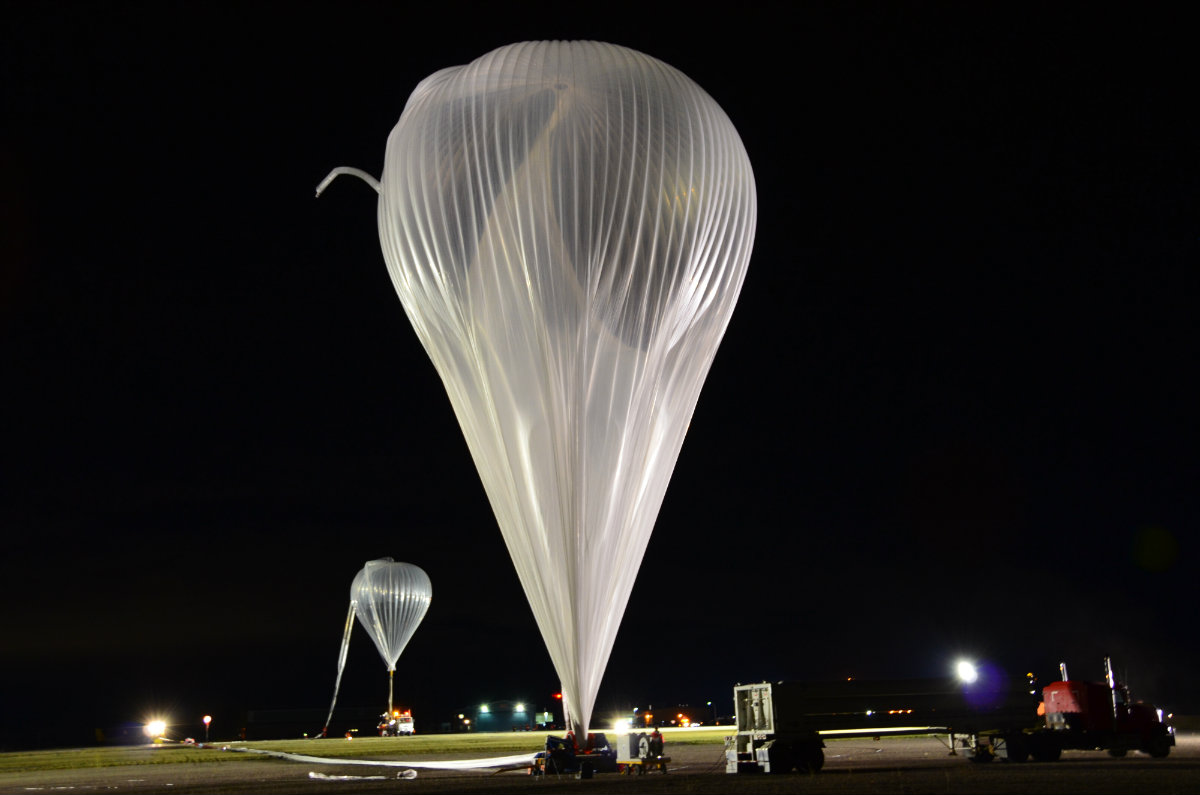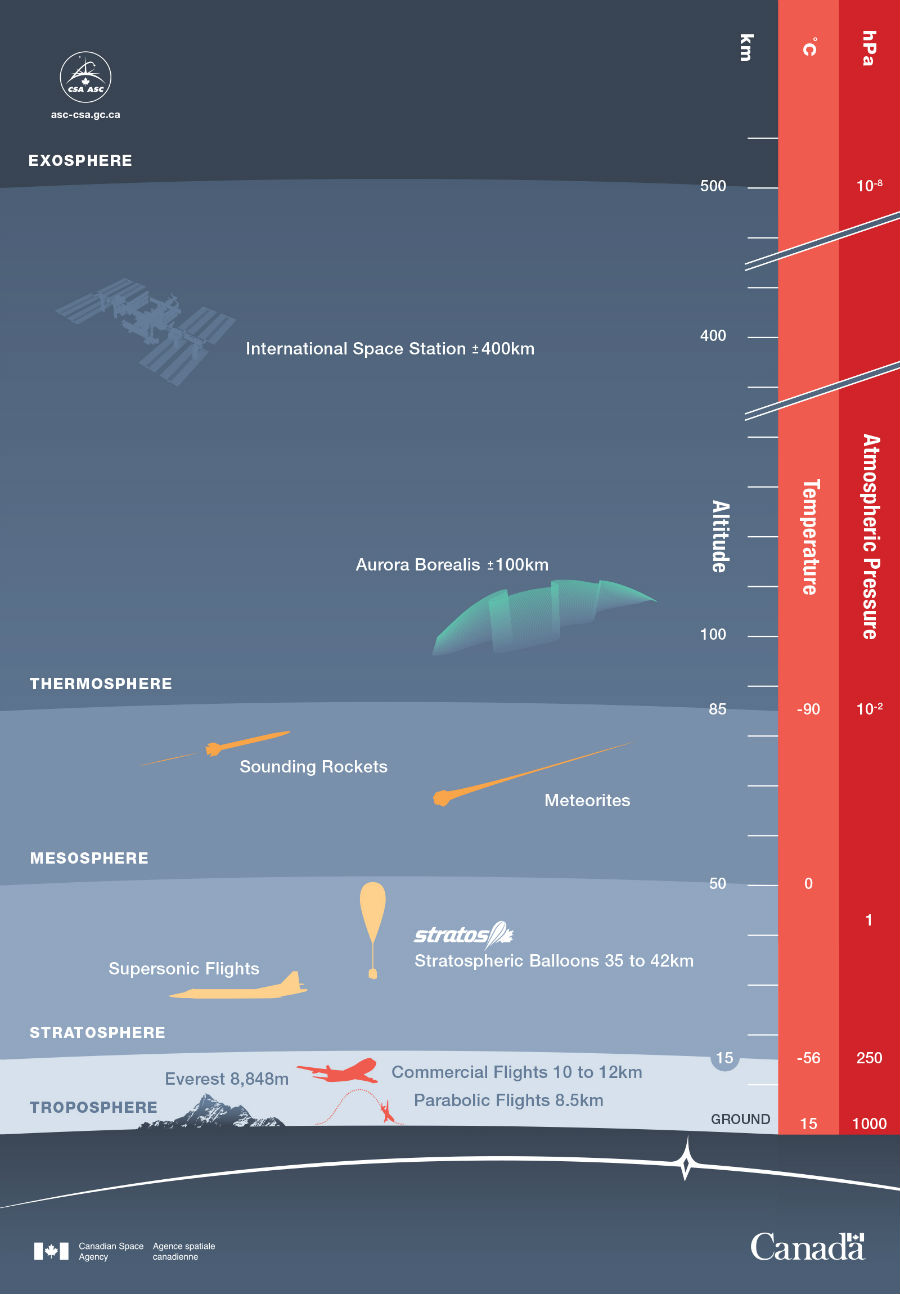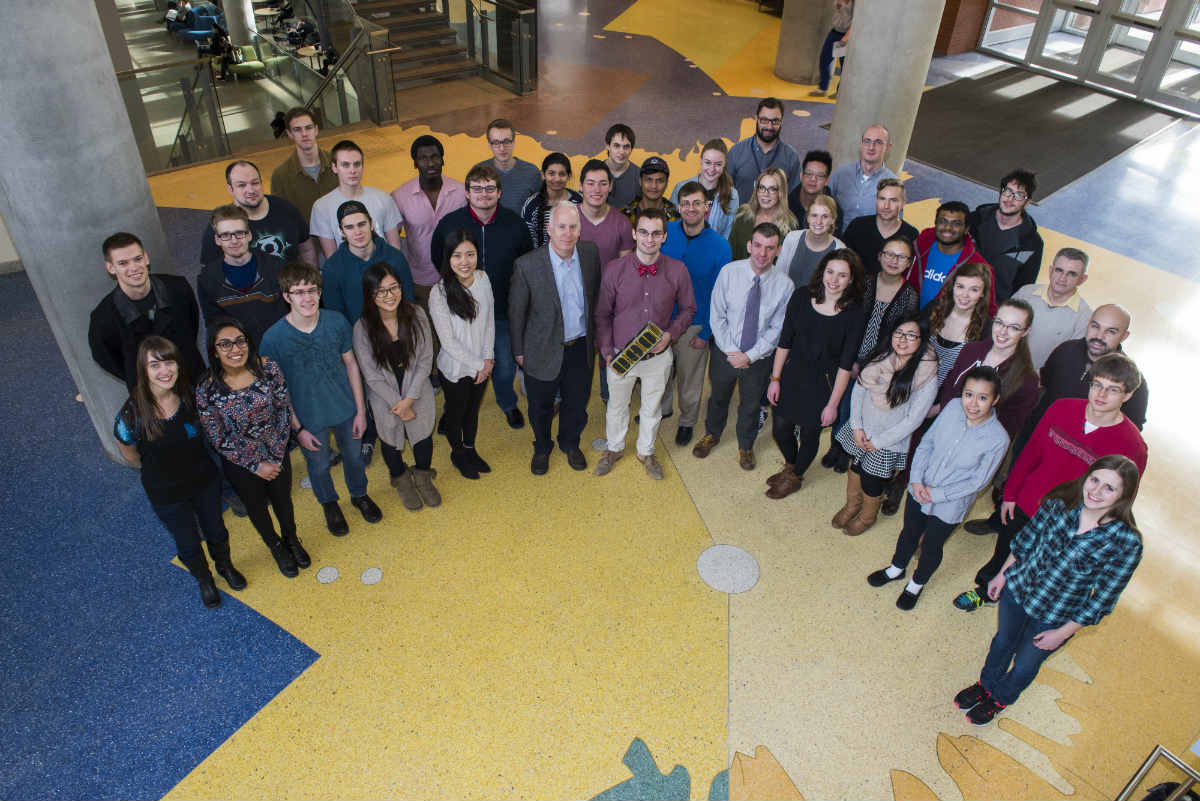
AlbertaSat's equipment will be lifting off on a stratospheric balloon much like the one pictured here, which was part of the Canadian Space Agency's 2015 Strato Science campaign. (Credit: Canadian Space Agency)
The next round of tests for student group AlbertaSat's new satellite will be getting off the ground with help from the Canadian Space Agency's stratospheric balloon program, STRATOS.
"The goals of this mission are to observe Alberta for areas at risk of wildfire, to monitor areas experiencing fire, and to analyze post-burn scarring on the landscape," said Clayton Coutu, master's student in the Faculty of Science and communications team lead for Ex-Alta 2. "With Ex-Alta 2 in orbit, we'll be one step closer to being able to monitoring wildfires across the province."
Ex-Alta 1, the team's first mission-launched into low Earth orbit in May, 2017-was equipped with tools to study space weather and Earth's magnetic field. The team's next satellite mission will be a little different. Ex-Alta 2 will be a wildfire monitoring satellite, using an onboard camera to gather data on fires on the ground.
"Ex-Alta 2 is a remote sensing satellite whose primary payload is a multispectral imager," explained Katelyn Ball, mechanical engineering student and deputy project manager of AlbertaSat. "The imager is being designed in-house by the AlbertaSat team, with a focus on collecting data on vegetation growth, post-burn effects and soil moisture.
"The decision to base Ex-Alta 2's mission on wildfire monitoring was motivated by the Slave Lake fires in 2011 and, of course, the Fort McMurray wildfire in 2016," said Ball. "The wildfires British Columbia saw last summer further supported our decision."
Before Ex-Alta 2 can get into orbit and begin its mission, the team has a lot of tests to carry out first. The team's next phase is to test the wildfire imager and Ex-Alta 2's data collection abilities, and they will be testing their equipment on a balloon in the stratosphere this month thanks to support from the Canadian Space Agency's STRATOS program.
"The support from the CSA is extremely important to us," said Ball from Timmins, Ontario, where the campaign is currently underway. "This weather balloon mission has a much shorter timeline than a typical satellite mission, so we get to see a project all the way from preliminary concept to launch-which is fairly rare for student space projects. We feel very honoured to be supported by our government space agency, and we're excited to continue our work with the CSA with the Canadian Cubesat Project, which will help fund the development and launch of Ex-Alta 2."
Look up - way up
The STRATOS tests for Ex-Alta 2 will be lifting into the air over Timmins, Ontario, at the the CSA's Timmins Stratospheric Balloon Base. The site was selected for its combination of wind and weather conditions, low population density, and on-site infrastructure. Six members of AlbertaSat will be on-site to monitor the tests, and are excited for the opportunity.
"The STRATOS test is essentially a test run of our first imager prototype," said Ball. "We decided to drive out to Timmins to reduce costs, so more students can join in on the experience and to make for a fun team-bonding roadtrip."
The enormous plastic balloon will be filled with helium the morning of the test, and when fully inflated could reach as tall as a 35-story building. Once released, the balloon will carry its testing and flight equipment in a payload known as a gondola, reaching 30 kilometres above the ground to the stratosphere, the second layer of Earth's atmosphere. Reaching these heights allows the team to test their equipment in an environment that's the next-best-thing to an actual launch.
The balloon will stay aloft for up to ten hours, broadcasting its location to the Canadian Space Agency and AlbertaSat team. Once the testing is complete and the balloon is over a safe place to land, the balloon is signalled by remote control to slowly deflate and return to solid ground, bringing with it a host of valuable data for the AlbertaSat team.
"The data we collect from the STRATOS test will drive our next iteration of the mechanical and optical design of the multispectral imager," said Ball. "The team will also continue to work on designing the other subsystems that make up Ex-Alta 2, which is set to launch in 2021. A launch date is the strictest deadline a space design team can be given, so we have a busy few years ahead."
The Canadian Space Agency will be running its STRATOS campaign through August 26th, supporting AlbertaSat and other groups with five balloon launches carrying scientific equipment.
The AlbertaSat team includes more than 50 students from the Faculty of Science and Faculty of Engineering, as well as students from the Faculty of Arts, Faculty of Education, and Faculty of Agricultural, Life & Environmental Sciences. Together, the AlbertaSat team designed, built, and launched the first made-in-Alberta satellite, Ex-Alta 1,which launched from the International Space Station in May of 2017. Want to learn more about the preparation for AlbertaSat's next launch? Visit their new web page.

